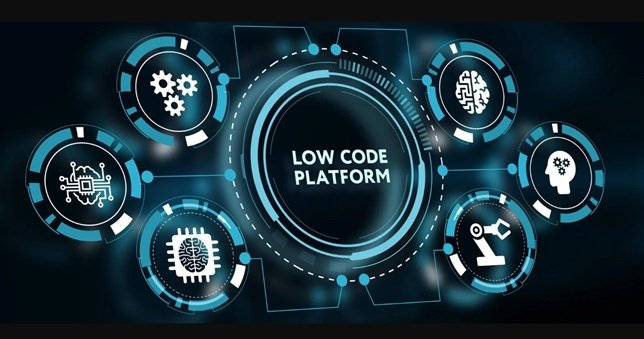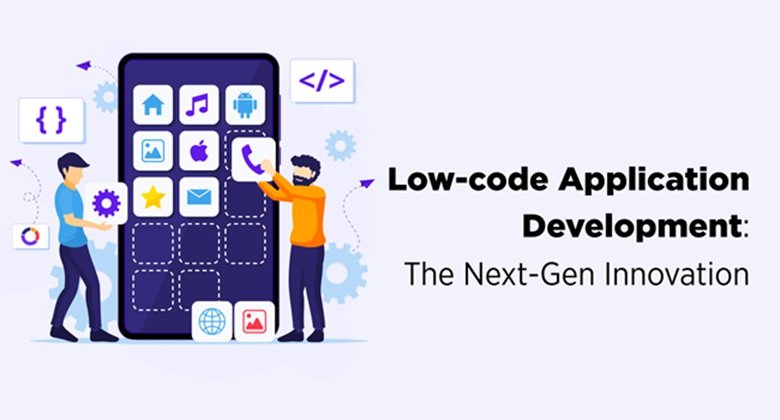Table of Contents
Welcome to the future of software development! In 2024, low-code platforms are not just a trend—they’re a transformative force reshaping the landscape of application development. Whether you’re a seasoned developer, a business leader, or someone just curious about the tech world, understanding the latest trends in low-code can give you a glimpse into the future of innovation and efficiency. Let’s explore these trends and see how they’re making waves in the tech community.
What is Low-Code?
Before diving into the trends, let’s quickly define what low-code is. Low-code development platforms allow users to create applications through graphical user interfaces and configuration rather than traditional hand-coding. This approach significantly speeds up the development process and makes it accessible to a broader range of people, including those without extensive coding knowledge.
Real-life Example
Imagine a small business owner who needs a custom inventory management system. Instead of hiring a team of developers and waiting months for the software to be built, they can use a low-code platform to create the application themselves in just a few days. With drag-and-drop features and pre-built templates, they can design a system tailored to their needs without writing a single line of code.
Trend 1: Democratization of App Development
One of the most exciting trends in 2024 is the democratization of app development. Low-code platforms are empowering non-developers—often referred to as “citizen developers”—to create and deploy applications. This shift is breaking down barriers and enabling more people to bring their ideas to life.
Real-life Example
Consider a marketing team at a mid-sized company. Previously, they relied on the IT department to create and manage their campaign tracking tools. Now, with low-code platforms, the marketing team can develop their own applications, customizing them on the fly to meet their specific needs. This autonomy speeds up project timelines and fosters innovation within the team.
Trend 2: Integration with AI and Automation
In 2024, low-code platforms are increasingly integrating with artificial intelligence (AI) and automation tools. These integrations enhance the capabilities of low-code applications, enabling more complex and intelligent solutions.
Real-life Example
A customer service department uses a low-code platform integrated with AI to create a chatbot that handles common inquiries. The chatbot not only responds to questions but also learns from interactions to improve its responses over time. Additionally, automation tools within the platform streamline workflows, such as routing customer issues to the appropriate department automatically.

Trend 3: Enhanced Security and Compliance Features
As more businesses adopt low-code platforms, the demand for robust security and compliance features has grown. In 2024, low-code platforms are prioritizing security, ensuring that applications built on their platforms meet industry standards and regulations.
Real-life Example
A healthcare provider uses a low-code platform to develop a patient management system. The platform includes built-in compliance with HIPAA (Health Insurance Portability and Accountability Act) regulations, ensuring that patient data is handled securely and confidentially. This feature allows the provider to focus on delivering quality care without worrying about the intricacies of data security.
Trend 4: Expansion of Ecosystems and Marketplaces
Low-code platforms are expanding their ecosystems and marketplaces, offering a wide range of pre-built components, templates, and integrations. This expansion allows users to easily extend the functionality of their applications and accelerate development.
Real-life Example
An e-commerce business wants to integrate a payment gateway and a shipping service into their online store. The low-code platform’s marketplace offers pre-built connectors for popular payment gateways like PayPal and Stripe, as well as shipping services like FedEx and UPS. By simply adding these connectors, the business can enhance their store’s functionality without extensive development work.
Trend 5: Focus on User Experience (UX) Design
In 2024, there is a heightened focus on user experience (UX) design within low-code platforms. These platforms are providing more advanced design tools and best practices to help users create visually appealing and user-friendly applications.
Real-life Example
A nonprofit organization is developing an app to manage volunteer sign-ups and events. The low-code platform offers a variety of design templates and UX guidelines, enabling the organization to create an intuitive and attractive app that encourages volunteer engagement and participation.

Conclusion
The low-code movement is gaining momentum, and 2024 is a pivotal year for its growth and evolution. With the democratization of app development, integration with AI and automation, enhanced security features, expanding ecosystems, and a focus on UX design, low-code platforms are transforming the way we build applications.
Embrace these trends and consider how low-code can revolutionize your projects, streamline your operations, and bring your ideas to life faster than ever before. Whether you’re a business leader looking to innovate or a tech enthusiast eager to explore new possibilities, low-code is the key to unlocking a world of opportunities in 2024 and beyond.




2 Pingbacks